Going back in time to racing at its finest: On the road, August 2022
While top-level racing took a break in August, there was non-stop action on the club scene, as Mustangs battled Fiestas; Minis wriggled in battle and vintage racing showed the sport at its best, all witnessed by our man on the road, Simon Arron
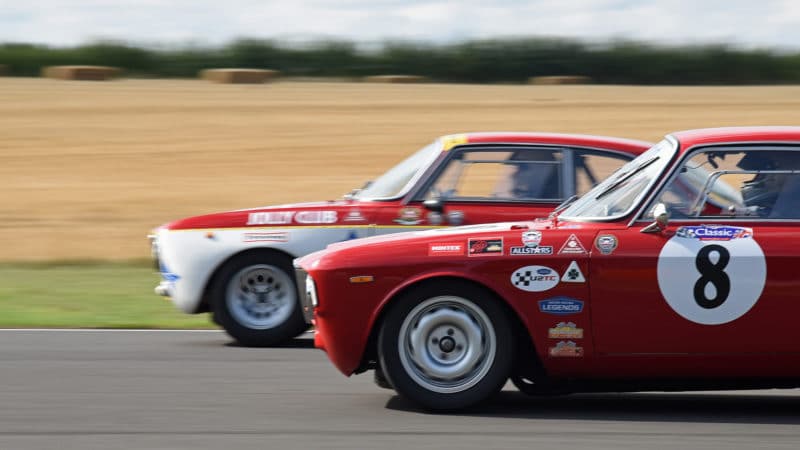
Action from the HRDC Classic Alfa Challenge, with Steven Byrne’s Giulia Sprint closest to the camera and John Symes’s Giulia GTAm evocation just behind
Simon Arron
Mini Festival
Brands Hatch, August 7
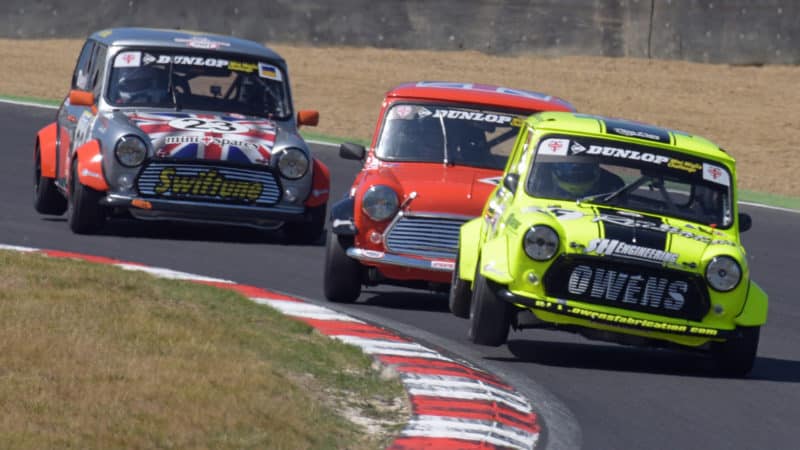
Endaf Owens under pressure during the opening Mini Miglia contest, from which he was forced to retire after tripping over a backmarker
Simon Arron
The intention had been to commence the month watching one of the highlights of the Veteran Sports-Car Club’s annual itinerary, at Prescott, but regular readers might recall that July ended with a tumble at Oulton Park (technical term: idiot). My ribs took a battering as a result of contact with something solid (possibly Cheshire, more likely a Nikon camera body) and were still significantly sore, so I took a closer, easier option.
If I were to be driving home in discomfort at the day’s end, better that the journey should last 25 minutes rather than a couple of hours.
MSV has previously promoted Mini Festivals at several of its circuits (including Oulton Park Fosters in 2017, something that surely merits repetition) – and they have far more in common than Sir Alec Issigonis’s iconic little box: they always ooze adrenaline, so much so that within a couple of laps you are oblivious to the fact your ribs might hurt. One-make racing might be the curse of many a modern paddock, but Minis can be forgiven on the grounds that they produce some of the finest racing on the planet.

Jeff Smith leads the Pre ’66 pack through Druids. The former BTCC racer had a busy day, taking one win apiece in both the Pre ’66 and Miglia classes
Simon Arron
Is there a case to be made for using Formula 1 cars to settle the world championship for constructors… and Mini Miglias to determine who is actually the best driver?
It’s not just a question of proximity, either. Whichever of the various Mini formulae is on track, cars are constantly recovered from ridiculous angles and alternate between two wheels and four, none of which seems to make the slightest bit of difference to overall lap time. To see half a dozen Minis glued together in an ever-rotating hierarchy is always pleasing; in this context, however, it is also completely normal.
The Fastest Mini In The World races didn’t generate quite the same competitive zest, but featured a wide range of interpretations in terms of performance-enhancing accessories. The correct cocktail, it seems, is flared arches, a large rear wing and a 2.6-litre V8, as fitted to the car of Harvey Death (pronounced ‘Deeth’).
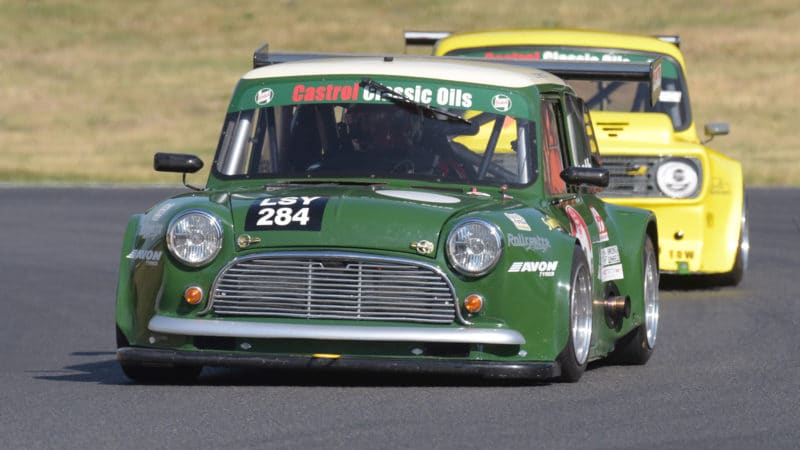
Harvey Death retained the Fastest Mini In The World title, with help from a 2.6-litre V8. Richard Billingham follows in his Clubman
Simon Arron
The Pre ’66 Minis were lavishly entertaining, too. Joe Ferguson and Jeff Smith took a win apiece, while the second race featured a splendid cameo from Miglia front-runner Nick Padmore. Taking over the car of not-quite-namesake Nick Paddy, who had hurt his back earlier in the day, he started at the tail of the grid and came through to finish third, despite a momentary fright at Paddock on the opening lap.
“I’d forgotten quite how much grip they don’t have,” he said…
MotorSport Vision Racing
Brands Hatch, August 13

Malcolm Harding took his Escort to a brace of wins in the Pre ’93, Pre ’03 & Blue Oval races, which attracted a 43-strong entry
Simon Arron
Shortly after Formula 1 entered its summer recess, Sky Sports put out a Tweet asking how devotees were coping without their fix of grand prix racing. For those whose veins course with Castrol R, other options have never exactly been scarce.
Whether these might be considered more attractive, I’ll leave others to judge.
In terms of the sport’s grassroots, this was peak territory: a chance for club racers to enjoy a rare outing on the extended version of Brands, a huge entry (43 cars in the opening race), plenty of shade on a ferociously hot day and the opportunity to refill water bottles at no cost (a nice touch at all MSV venues). I was going to add that there were almost as many Escorts present as Ford ever made, but a quick check reveals that they produced more than two million Mk1s, so that wouldn’t have been true. Either way, there were lots of cars that complemented the circuit’s verdant backdrop; if you stand at a certain angle, there are several spots around the track that allow you to take photos with a purely arboreal backdrop. It doesn’t look like 2022, despite what your smartphone might tell you.

Stephen Primett leads fellow Escort driver Mark Lucock during Pre ’66 & Pre ’83 practice. Primett beat 70th birthday boy Graham Scarborough in the first race, but they swapped places in the second
Simon Arron
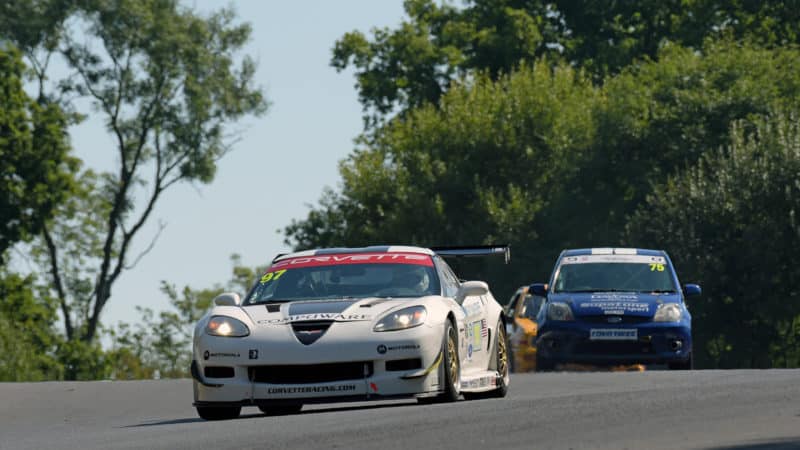
Where else but Britain? Andy Woods-Dean’s Corvette leads James Beale’s Fiesta through Westfield
Simon Arron
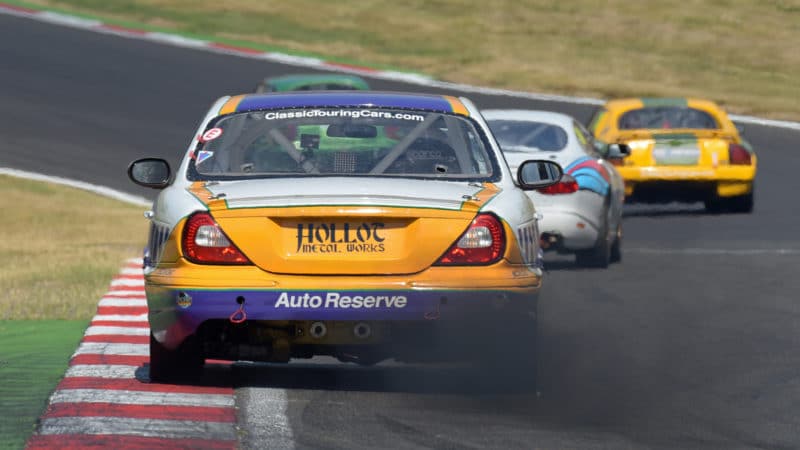
Did Lofty England ever envisage that a Jaguar diesel might one day race? Possibly not. Andrew Harper chases rivals towards Graham Hill Bend
Simon Arron
And it’s a nice place to be even without the cars: there is no PA to the outside of Westfield – understandable, as it’s inaccessible to the paying public – but green woodpeckers provide a pleasing alternative. It’s just a pity they are audible rather than visible, for they would provide a welcome photographic target whenever the safety car comes out.
Which was quite often – something of a problem at a meeting such as this. I appreciate their purpose, of course, but the spectacle rather wilts when they are deployed for several laps during a 15-minute race on a track as long as this.
Overall, though, this was a very refreshing blend – proof that UK motor racing has strength, depth and diversity if you look in the right places. One of the highlights was the performance of Graham Scarborough. A staple of club-level British saloon car racing through the 1980s, he took his Capri to a victory and a second place on the day he turned 70.
British Truck Racing Championship
Donington Park, August 20
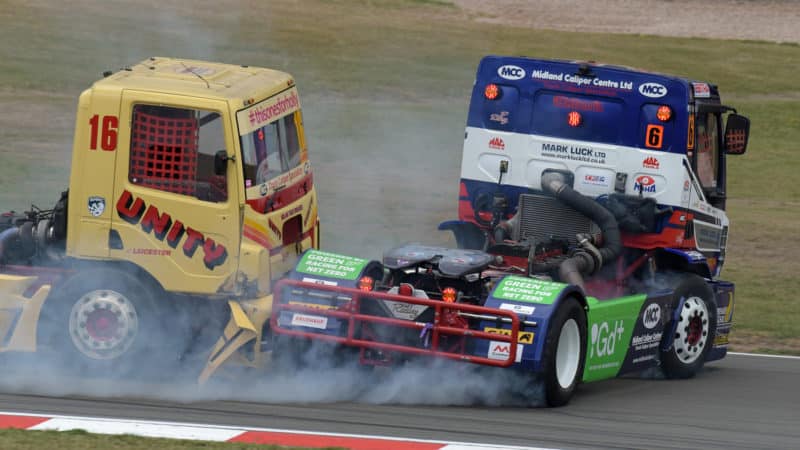
The DAFs of John Powell and Brad Smith become entangled on the opening lap of the first truck race; both continued
Simon Arron
No matter how long you’ve been involved in this business, it’s never too late to break fresh ground. Such as…
It was in 1980 that I paid my first visit to Donington Park, the circuit that four years later hosted the UK’s first truck race. That was a big deal, over the weekend of September 29-30, with trucks separated into three classes (up to 300bhp, 301-350bhp and 350bhp-plus) and a number of star names on the grid. Barry Sheene raced a DAF, Martin Brundle took a break from Tyrrell F1 duties to drive a Renault and Sheene’s former Suzuki team-mate Steve Parrish was in a Mercedes.
As Parrish told Motor Sport in 2018, “It turned out to be a crazy event – they claimed there were about 130,000 people present and I can believe it. The roads all around were at a standstill and I think East Midlands Airport had to be closed for a while because emergency vehicles would not have been able to get in or out.”
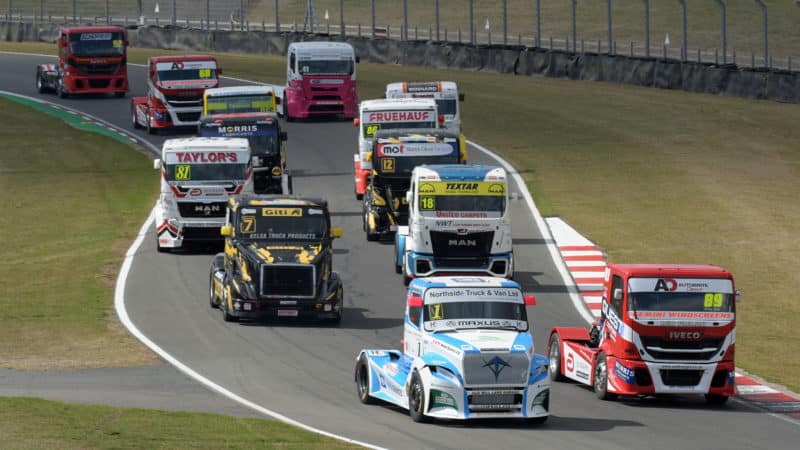
Ryan Smith leads the field through the Craner Curves during a pace lap. He would win the first and final (fifth) races of the weekend
Simon Arron
The competing trucks were pretty much standard (Parrish: “Mercedes suggested I try it first on the road. I’d never driven anything bigger than a Ford Transit, but pretended I had the correct licence and then drove off, crunching gears and telling them it was because I was more used to a Scania…”), so quite some way removed from their more specialised modern counterparts, and it has been part of the UK’s sporting landscape ever since. This, though, was the first time I’d ever watched it at its spiritual home.
The paddock was the busiest I have seen at Donington for quite some years, aided and abetted by a strong supporting cast (particularly the British Endurance Championship, Legends and Pickups, but less so the Praga Cup – a 10-car field and patchy reliability are not a great recipe for two one-hour races).
Just as impressive as anything on the track was the incredible infield display of show trucks – a bit like the things you see on the M6, but with somewhat fancier paint jobs. They proved to be an integral part of the event, lighting up their klaxons in response to events on the circuit.
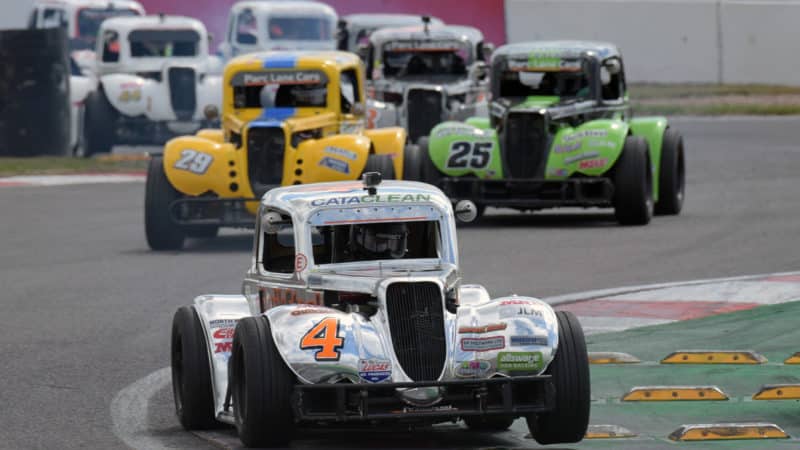
Legends in their own lap time: inside front wheel pawing the air, John Mickel leads the horde through the chicane
Simon Arron
Certain parts of the outfield are out of bounds to all when the trucks are in action, but the inner sanctum was very busy – and it’s always charming to hear young kids becoming noticeably animated when the ‘lorry racing’ is about to begin.
Almost 40 years beyond their maiden UK voyage, their cartoonish appeal endures.
Vintage Sports-Car Club
Mallory Park, August 21
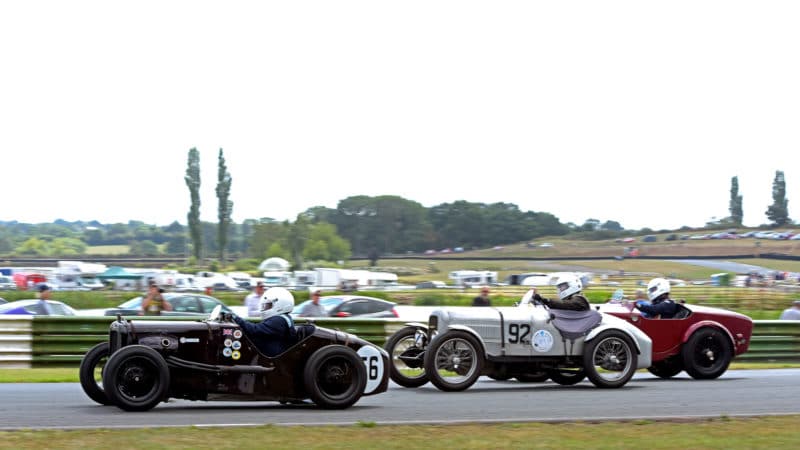
George Scholey (Austin 7 Ulster) comes under pressure at the John Cooper Esses during the Mallory Park Trophy Race for VSCC Specials
Simon Arron
Having stayed overnight at the Premier Inn in Ashby-de-la-Zouch – which included the curious episode of ordering an evening meal that didn’t materialise, because the chef had apparently stormed out (shades of John Surtees at Le Mans in 1966, perhaps) – it was time for a lovely, 25-minute amble along the A447 to one of the world’s finest cafés, which happens to have a racing circuit wrapped around it.
The going rate for a Mallory breakfast is presently £7, served with a smile and a pint of coffee – the perfect start to any day.
Mallory meetings always have a lovely feel to them – and car events are something of a rarity nowadays – but the VSCC conjures a very particular ambience, the sound of mechanical clatter interspersed with friendly banter.
This was the club’s final meeting of 2022 and the flavour of its events has evolved over time. When I first attended VSCC races in the early 1970s, Maserati 250Fs were a common sight and you might see the occasional Alfa Romeo P3. Nowadays, such jewels tend to be set aside for higher-profile events – and the same applies to bygone staples such as ERAs (the marque’s only representation at this event being the ERA-engined Parnell Challenger, handled by Duncan Ricketts). The other thing I recall from 50-odd years ago is that relatively few drivers seemed to be trying very hard, which is quite the opposite of what we see today.
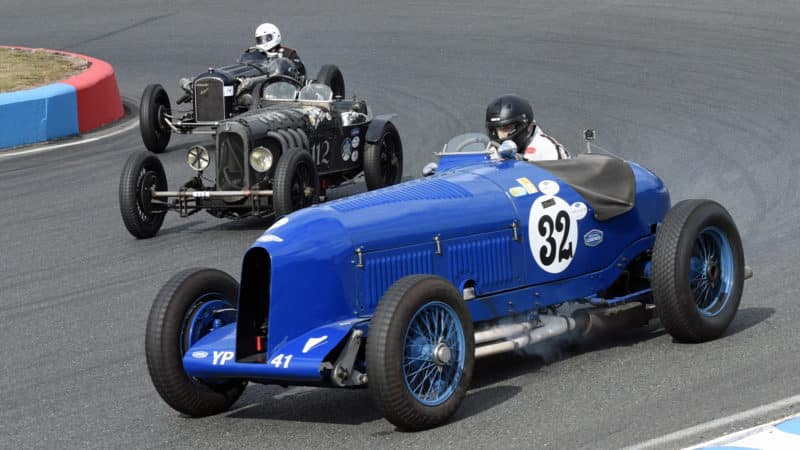
Oliver Llewellyn (Bentley), Tom Walker (Amilcar) and Justin Maeers (GN Parker) were always this close, but rarely in the same order from one lap to the next
Simon Arron
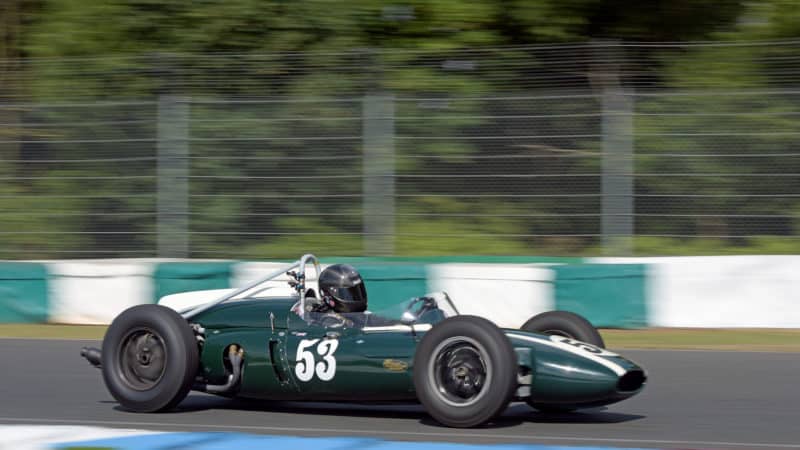
Justin Maeers won the Bob Gerard Memorial Trophy in his Cooper T53
Simon Arron
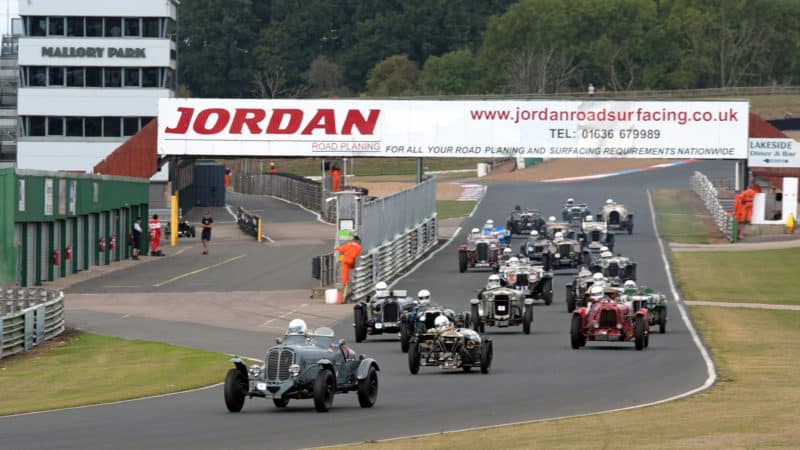
Mark Brett (Ballamy) leads the field towards Gerards at the start of the Mallory Mug Trophy Race. He finished second to Sue Darbyshire in her Morgan Super Aero
Simon Arron
The Bob Gerard Memorial & Robert Ashley Trophies Race (for pre-war and pre-1966 racing cars) attracted a nice selection of machinery, but was torpedoed by poor reliability – Justin Maeers won overall, but only four cars were on the lead lap by the end. Best moments of the day came during the GP Itala, Lanchester & Boulogne Trophies Race for vintage racing and sports cars. Patrick Blakeney-Edwards (Frazer Nash Super Sports) won quite comfortably in the end, but there had been some fantastic racing – and endless place-swapping – among a leading quartet that also comprised Tom Walker (Amilcar), Oliver Llewellyn (Bentley) and Justin Maeers (GN Parker, the only one of them that failed to last the distance).
The cars had contrasting strengths and weaknesses at different points on the track, but it created a fabulous spectacle. As a barometer of their equality, Llewellyn set fastest lap at 57.69sec, followed by Blakeney-Edwards (57.93sec), Maeers (58.04sec) and Walker (58.26sec).
This was motor racing at its very finest – no more, no less.
2022 Countdown
Castle Combe, August 29
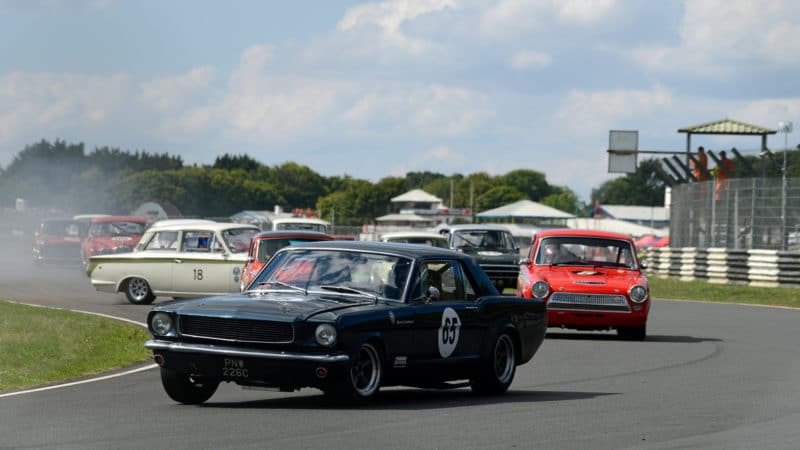
The original Jack Sears Trophy start, with Alex Thistlethwayte’s Mustang leading into Quarry and Kyle Tilley’s Cortina on the verge of looping around
Simon Arron
It’s always alarming to see a motorway matrix sign that imposes a 20mph limit due to an ‘oncoming vehicle’, though as the same restriction was in force on the opposite carriageway it’s fair to assume this was some kind of systems test.
But why impose such things when the M4 is busy on a bank holiday Monday morning?
The modern world’s intermittent frustrations dissolve within moments of reaching Castle Combe’s welcoming embrace, complete with old-style grassy paddock and its engaging range of home-spun championships, most of which are well supported. It’s a welcome opportunity to watch cars that race elsewhere very rarely, if at all. I spent part of the morning taking photos from the spectator area at Quarry, among a feast of deckchairs occupied by people who chat knowledgeably about the sport, appreciate what they are watching and greet race winners with suitably warm applause.
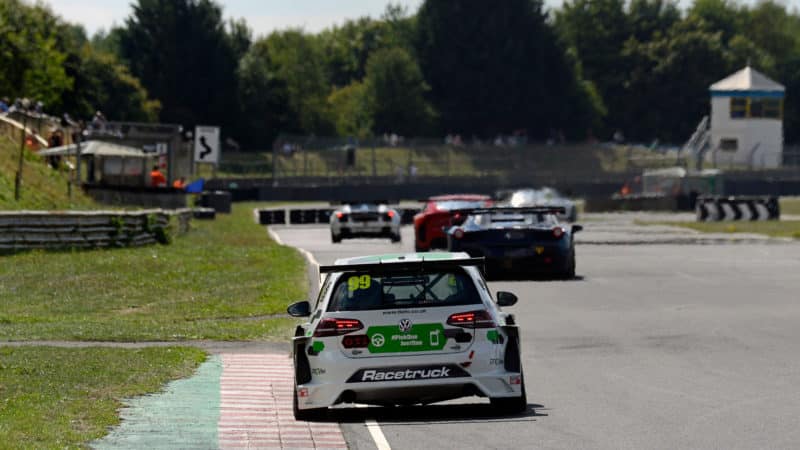
Jamie Sturges (VW Golf TCR) chases the CCRC GT pack towards Old Paddock
Simon Arron
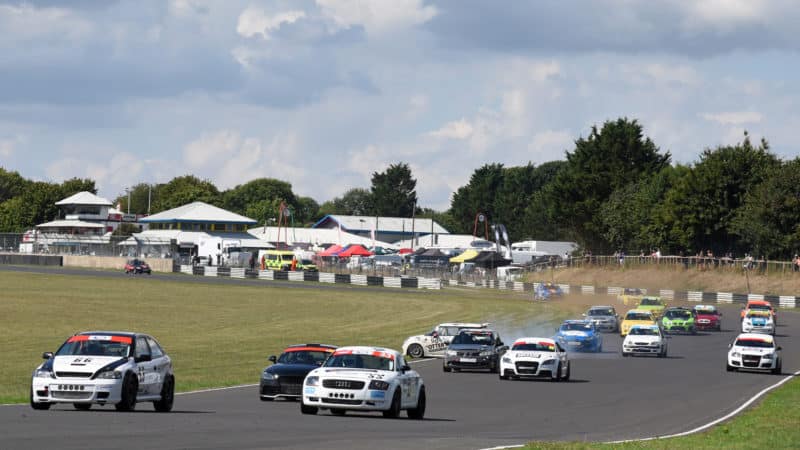
The start of the Castle Combe Racing Club Saloon Championship, with winner Adam Prebble’s Vauxhall Astra already pulling clear – and Mini driver Tom Cook taking a different line to everyone else
Simon Arron
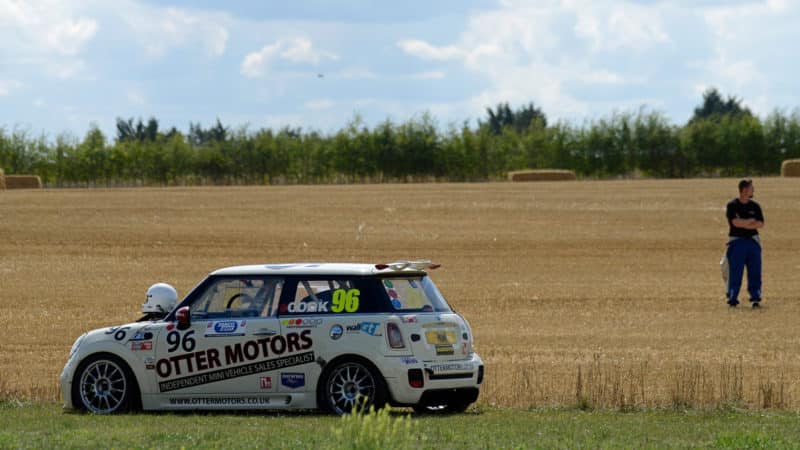
After spinning off within the opening few seconds of the start, Tom Cook watched the balance of the CCRC Saloon action from the infield…
Simon Arron
The Historic Racing Drivers Club was likewise present, with its predictably unpredictable diversity and cars whose elegant body language complements Combe’s brisk sweeps.
Sadly, though, the day was to be marred by a horrible accident during the early stages of the HRDC’s Jack Sears Trophy race, when experienced campaigner Charles Knill-Jones’s Austin A35 rolled several times at Quarry. Racing was suspended for about 90 minutes while rescue and clear-up operations were completed and Knill-Jones, badly injured, was transferred by road to Bristol Southmead Hospital.
The recovery process will be long, but the early signs have been positive and I wish him all the best. I will always love this sport, but hate to see it bite.
